HEMP! HEMP! HOORAY! — Growing Hemp is now legal in the United States
by Edward Ulrich, updated September 27, 2022
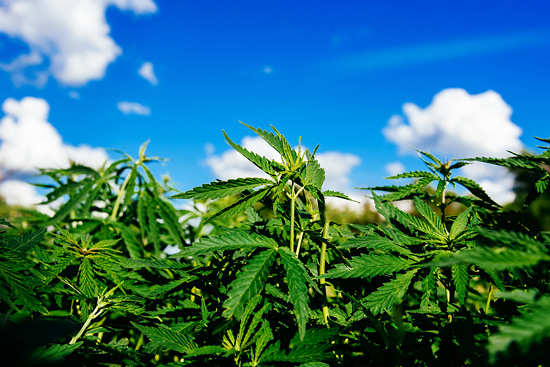
Image: BigStockPhoto.com.
Donald Trump had legalized growing hemp nationwide in the U.S. starting in January of 2019, after nearly 50 years of prohibition. The Hemp Farming Act of 2018 was signed into law on December 20, 2018, being a part of the 2018 Farm Bill. The act changes the classification of hemp from being a controlled substance to being an agricultural product, and additionally it gives farmers opportunities to receive loans, water rights, and crop insurance for growing hemp.
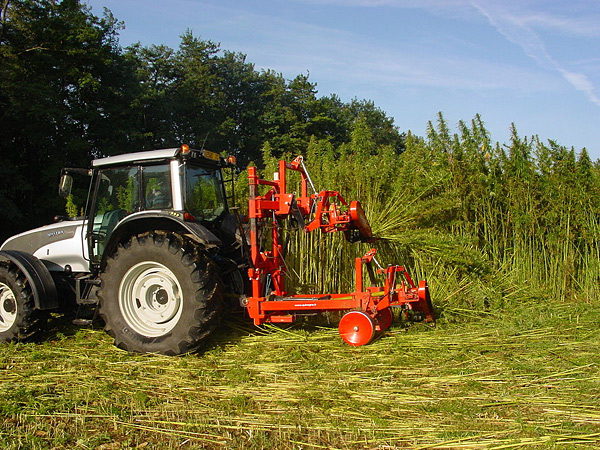
Hemp being harvested in France. Image: Wikipedia.
Trump’s new policy will have enormous positive environmental and economic effects, as cutting trees will no longer be necessary for the production of paper and many types of building materials, cotton that is dependent on toxic pesticides will be able to be replaced by hemp for the creation of fabric for clothing, and many foods can be made from hemp as well.
Agricultural hemp does not contain the drug tetrahydrocannabinol (THC) that is contained in marijuana plants, however the fact that it is difficult to distinguish the difference between those plants by appearance has been cited as the reason for outlawing the cultivation of hemp in the past. Also competing industries such as logging interests have been influential in ensuring that the cultivation of hemp has remained illegal.
This article explains many benefits of the cultivation and use of the hemp plant.
Article Notes
new:
September 27, 2022 - Added information about load bearing structures made from hemp.
September 25, 2022 - Updated the text in the article.
September 25, 2022 - Updated the text in the article.
Jump to parts of this article:
PRODUCTS THAT CAN BE MADE FROM HEMP
Section Introduction
Examples of Materials That Can Be Manufactured From Hemp
Examples of Foods That Can Be Made From Hemp
ISSUES WITH CULTIVATING HEMP
A News Report About Hemp Cultivation in Alberta, Canada
Section Introduction
Examples of Materials That Can Be Manufactured From Hemp
Examples of Foods That Can Be Made From Hemp
ISSUES WITH CULTIVATING HEMP
A News Report About Hemp Cultivation in Alberta, Canada
BENEFITS OF CULTIVATING HEMP
Products that can be made from hemp
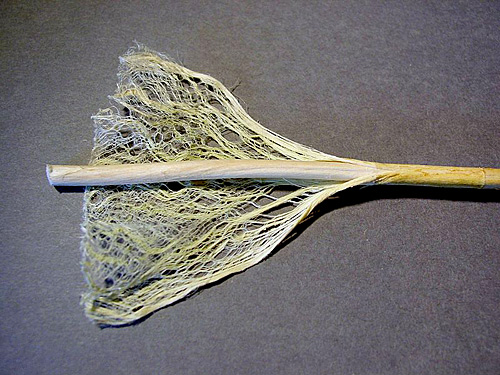
Hemp fibers from a hemp stalk. Image: Wikipedia.
The hemp plant has an amazing amount of uses. This section lists some of the most common ways it is utilized.
EXAMPLES OF MATERIALS THAT CAN BE MANUFACTURED FROM HEMP
Jump to parts of this section ..
Load Bearing Structures Made From Hemp
Hemp Paper | Hemp Fabrics | Issues with other types of fabrics
Hemp Fiberboard / Particle Board | Hempcrete | Hemp Composites / Plastics
Hemp Personal Care Products | Hemp Paint / Varnish
Hemp Thermal Insulation | Hemp Rope
Products That Could Be Made From Hemp But Shouldn’t
Hemp Paper | Hemp Fabrics | Issues with other types of fabrics
Hemp Fiberboard / Particle Board | Hempcrete | Hemp Composites / Plastics
Hemp Personal Care Products | Hemp Paint / Varnish
Hemp Thermal Insulation | Hemp Rope
Products That Could Be Made From Hemp But Shouldn’t
Load Bearing Structures Made From Hemp
This video shows the first “bio-based” pedestrian bridge, which is made in the Netherlands from composites of hemp and flax. It was made to demonstrate that strong load bearing structures can be constructed from materials made from plant-based fibers such as hemp.
This video shows the first “bio-based” pedestrian bridge, which is made in the Netherlands from composites of hemp and flax. It was made to demonstrate that strong load bearing structures can be constructed from materials made from plant-based fibers such as hemp.
Hemp Paper
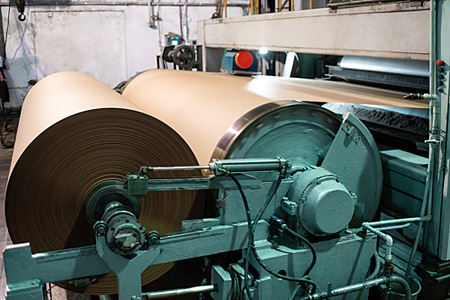
The following information is from Wikipedia:
— Hemp paper means paper varieties consisting exclusively or to a large extent from pulp obtained from fibers of industrial hemp. ..
— The chemical composition of hemp hurds is similar to that of wood, making hemp a good choice as a raw material for manufacturing paper.
— Dried hemp has about 57% cellulose (the principal ingredient in paper), compared to about 40-50% in wood.
— Hemp also has the advantage of a lower lignin content: hemp contains only 5-24% lignin against the 20-35% found in wood. This lignin must be removed chemically and wood requires more use of chemicals in the process. ...
[Note: It is interesting that in the Wikipedia article about hemp paper someone has written the following: “... However, production costs [for hemp paper] are about four times higher than for paper from wood, so hemp paper could not be used for mass applications as printing, writing and packaging paper.” However, whoever wrote the claim didn’t supply citations for it, and other non-cited entries in the article also seem to be fraudulently attempting to prosthelytize for wood-based paper as well.]
Following is information from a Canadian McGill University web page:
— An acre of hemp will produce as much pulp for paper as 4.1 acres of trees over a 20 year period.
— The hemp paper-making process requires no dioxin-producing chlorine bleach and uses 75% to 85% less sulphur-based acid.
— Hemp paper is suitable for [being recycled] 7 to 8 times, compared with 3 times for wood pulp paper.
— By utilizing hemp pulp for paper, we could stop the deforestation of our country and produce stronger, more environmentally sound paper for less than 1/3 of the price of wood pulp paper. The paper mills now in place would need almost no conversion in order to switch from wood to hemp pulp.

Image: BigStockPhoto.com.
The following information is from Wikipedia:
— Hemp paper means paper varieties consisting exclusively or to a large extent from pulp obtained from fibers of industrial hemp. ..
— The chemical composition of hemp hurds is similar to that of wood, making hemp a good choice as a raw material for manufacturing paper.
— Dried hemp has about 57% cellulose (the principal ingredient in paper), compared to about 40-50% in wood.
— Hemp also has the advantage of a lower lignin content: hemp contains only 5-24% lignin against the 20-35% found in wood. This lignin must be removed chemically and wood requires more use of chemicals in the process. ...
[Note: It is interesting that in the Wikipedia article about hemp paper someone has written the following: “... However, production costs [for hemp paper] are about four times higher than for paper from wood, so hemp paper could not be used for mass applications as printing, writing and packaging paper.” However, whoever wrote the claim didn’t supply citations for it, and other non-cited entries in the article also seem to be fraudulently attempting to prosthelytize for wood-based paper as well.]
Following is information from a Canadian McGill University web page:
— An acre of hemp will produce as much pulp for paper as 4.1 acres of trees over a 20 year period.
— The hemp paper-making process requires no dioxin-producing chlorine bleach and uses 75% to 85% less sulphur-based acid.
— Hemp paper is suitable for [being recycled] 7 to 8 times, compared with 3 times for wood pulp paper.
— By utilizing hemp pulp for paper, we could stop the deforestation of our country and produce stronger, more environmentally sound paper for less than 1/3 of the price of wood pulp paper. The paper mills now in place would need almost no conversion in order to switch from wood to hemp pulp.
HEMP FABRICS

Hemp textile fabric. Image: BigStockPhoto.com.
From Wikipedia: “The bast fibers [of hemp] can be used to make textiles that are 100% hemp, but they are commonly blended with other fibers, such as flax, cotton or silk, as well as virgin and recycled polyester, to make woven fabrics for apparel and furnishings. ... Hemp was also commonly used to make sail canvas. The word ‘canvas’ is derived from the word cannabis. Pure hemp has a texture similar to linen.”
A new type of hemp processing machine may mean the end of cotton cultivation
A new type of machine invented by an Australian named Adrian Clarke is able to process freshly harvested hemp into yarn that can be used in existing cotton spinning machines, which will likely revolutionize textile production around the world.
This 2012 Australian ABC video explains the status of hemp cultivation and legalization in Australia, while also explaining many benefits of the plant.
Following are points from the video’s information (STARTING AT ABOUT 5:30 INTO THE VIDEO) about a NEW INVENTION that revolutionizes the processing of hemp for it to be used in fabrics:
— Hemp was the world’s most used textile fiber until the invention of the cotton gin, and until now the process of separating the bast fiber from the stem of the plant has been expensive and burdened by outdated technology.
— Adrian Clarke of Textiles and Composite Industries: “You cannot do anything with hemp until you have separated the hurd from the fiber. The fiber is the bark on the outside, the hurd is the woody pith in the middle.”
— Narrator: “Victorian inventor Adrian Clarke is working on a decortication machine which can process hemp in the field. It produces material that can be adapted to existing cotton spinning technology, and Mr. Clarke says its potential is revolutionary.”
— Clarke: “Theoretically you could cut it today, and be spinning it tomorrow. And we recover over 90% of the fiber. But we do it in a way that will spin in cotton machinery. They are making advances with cotton machinery every day. Billions of dollars get spent on improving the cotton spinning. So we link into the most modern technology out of the oldest technology. We bring more fiber per hectare and we bring a better fiber. And its not stained, it can be spun and dyed just like cotton. And most of the goods you’ll see around in the hemp shops is actually a blend of cotton and hemp, so it gets the benefit of both.”
— Narrator: “This particular machine is just a prototype, but its Australian inventor thinks it can revolutionize textile production throughout the world.”
— Clarke also talks about his development of a decortication machine that is small enough to fit inside of a harvesting tractor, which immediately processes the hemp by separating the fiber from the hurd at the moment it is cut in the fields.
This March 2018 video shows the official unveiling of the “D8 Hemp Decorator” by the Australian firm “Textile and Composite Industries.” The machine is able to perform what is called “green decortication without retting,” which means that it is able to turn freshly harvested hemp plants into yarn that is able to be used in traditional cotton spinning machines by the end of the day, which previously had not been possible.
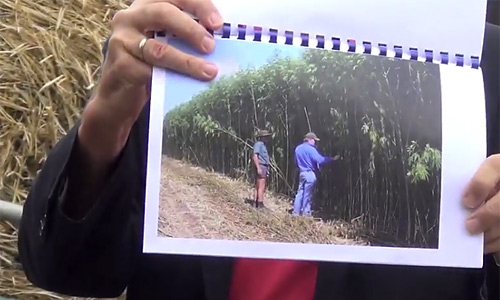
The machine demonstrated in the above video is designed to process tall healthy hemp plants into yarn that is able to be used in cotton spinning machines, which is an entirely new technology.
Points from the video:
— The machine is designed to process an “ideal crop” of very tall and healthy hemp plants at the moment of being harvested, without the plants needing to be dried first.
— The machine eliminates the need for “retting” the hemp altogether, which is important because retting damages the resulting fibers and the hurd. [Note: Retting is a process of “controlled rotting,” where the plant is intentionally degraded either by being made to sit in the field for a few weeks after being cut, or through it being soaked in a water or chemical bath. See a Canadian Hemp Alliance webpage about the process.] Since the machine doesn’t need to ret the hemp as previous processes do, the resulting fibers are much stronger and are easily able to be used on traditional cotton spinning machines, which was previously not possible with hemp.
— Charles Covis, the international marketing director for the company explains: “The vision of this machine is to harvest this crop in the morning, decorticate it straight away, take the fiber and de-gum it, and turn it into yarn by the end of the day. From harvest to yarn in one day. ... This is ‘green’ decortication which has never been done before. ... The idea is to have [no more than] 5% of the hurd in the fiber, and 5% of the fiber in the hurd. ... With 5% hurd it is easy to de-gum, after de-gumming it can be cleaned and then spun on standard cotton spinning equipment.”
— At 21 minutes into the video, Adrian Clarke, the inventor of the machine and the founder of the company, demonstrates how it works using a bale of dried hemp.
A new type of machine invented by an Australian named Adrian Clarke is able to process freshly harvested hemp into yarn that can be used in existing cotton spinning machines, which will likely revolutionize textile production around the world.
This 2012 Australian ABC video explains the status of hemp cultivation and legalization in Australia, while also explaining many benefits of the plant.
Following are points from the video’s information (STARTING AT ABOUT 5:30 INTO THE VIDEO) about a NEW INVENTION that revolutionizes the processing of hemp for it to be used in fabrics:
— Hemp was the world’s most used textile fiber until the invention of the cotton gin, and until now the process of separating the bast fiber from the stem of the plant has been expensive and burdened by outdated technology.
— Adrian Clarke of Textiles and Composite Industries: “You cannot do anything with hemp until you have separated the hurd from the fiber. The fiber is the bark on the outside, the hurd is the woody pith in the middle.”
— Narrator: “Victorian inventor Adrian Clarke is working on a decortication machine which can process hemp in the field. It produces material that can be adapted to existing cotton spinning technology, and Mr. Clarke says its potential is revolutionary.”
— Clarke: “Theoretically you could cut it today, and be spinning it tomorrow. And we recover over 90% of the fiber. But we do it in a way that will spin in cotton machinery. They are making advances with cotton machinery every day. Billions of dollars get spent on improving the cotton spinning. So we link into the most modern technology out of the oldest technology. We bring more fiber per hectare and we bring a better fiber. And its not stained, it can be spun and dyed just like cotton. And most of the goods you’ll see around in the hemp shops is actually a blend of cotton and hemp, so it gets the benefit of both.”
— Narrator: “This particular machine is just a prototype, but its Australian inventor thinks it can revolutionize textile production throughout the world.”
— Clarke also talks about his development of a decortication machine that is small enough to fit inside of a harvesting tractor, which immediately processes the hemp by separating the fiber from the hurd at the moment it is cut in the fields.
This March 2018 video shows the official unveiling of the “D8 Hemp Decorator” by the Australian firm “Textile and Composite Industries.” The machine is able to perform what is called “green decortication without retting,” which means that it is able to turn freshly harvested hemp plants into yarn that is able to be used in traditional cotton spinning machines by the end of the day, which previously had not been possible.

The machine demonstrated in the above video is designed to process tall healthy hemp plants into yarn that is able to be used in cotton spinning machines, which is an entirely new technology.
Points from the video:
— The machine is designed to process an “ideal crop” of very tall and healthy hemp plants at the moment of being harvested, without the plants needing to be dried first.
— The machine eliminates the need for “retting” the hemp altogether, which is important because retting damages the resulting fibers and the hurd. [Note: Retting is a process of “controlled rotting,” where the plant is intentionally degraded either by being made to sit in the field for a few weeks after being cut, or through it being soaked in a water or chemical bath. See a Canadian Hemp Alliance webpage about the process.] Since the machine doesn’t need to ret the hemp as previous processes do, the resulting fibers are much stronger and are easily able to be used on traditional cotton spinning machines, which was previously not possible with hemp.
— Charles Covis, the international marketing director for the company explains: “The vision of this machine is to harvest this crop in the morning, decorticate it straight away, take the fiber and de-gum it, and turn it into yarn by the end of the day. From harvest to yarn in one day. ... This is ‘green’ decortication which has never been done before. ... The idea is to have [no more than] 5% of the hurd in the fiber, and 5% of the fiber in the hurd. ... With 5% hurd it is easy to de-gum, after de-gumming it can be cleaned and then spun on standard cotton spinning equipment.”
— At 21 minutes into the video, Adrian Clarke, the inventor of the machine and the founder of the company, demonstrates how it works using a bale of dried hemp.
Video of a hemp fiber processing operation in Hungary and Romania. Note that the hemp used in this (now outdated) process needs to be “retted,” meaning that it either needs to sit in fields for a few weeks in the rain after being cut, or it would need to be soaked in water or chemicals for a shorter period of time.
This Australian video shows that the color of unbleached hemp fabric is naturally white, whereas hemp fabrics that appear to be more natural in color have actually been treated to have that appearance. This characteristic of hemp means that it does not need to rely on chemical processes such as bleaching.
Issues with other types of fabrics
Fabrics come from a wide variety of sources, and most have their own particular drawbacks.
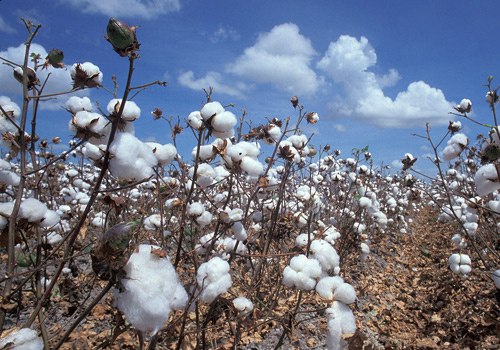
A cotton crop ready to be harvested. Image: Wikipedia.
Cotton crops need a lot of water, and the fabric is usually bleached and chemically treated and dyed. Cotton also has one of the highest pesticide uses of crops and it is usually genetically modified, making it an extremely environmentally un-friendly fabric. Other types of natural fibers such as linen are more preferable than cotton, but hemp is the most ideal natural fiber because it does not require pesticides, and it rejuvenates the soil that it is grown in.
Jute is a plant that has similar characteristics to hemp for being used as a source of fiber for fabrics and ropes. Like hemp, jute traditionally has needed to be “retted” before its fibers are extracted by letting it “rot” with water on it for a period up to a few weeks. [Note I haven’t found much information on the internet specifically comparing the characteristics of hemp to jute, so I don’t know how superior hemp is to jute for making fabrics.]
Animal based fabrics such as wool and silk have animal cruelty issues. Silkworms are killed in the process of harvesting the fibers of their cocoons, and animals that produce wool such as sheep often suffer.
This video explains many issues with the production of wool, showing how sheep are often horribly mistreated.
Fabrics come from a wide variety of sources, and most have their own particular drawbacks.

A cotton crop ready to be harvested. Image: Wikipedia.
Cotton crops need a lot of water, and the fabric is usually bleached and chemically treated and dyed. Cotton also has one of the highest pesticide uses of crops and it is usually genetically modified, making it an extremely environmentally un-friendly fabric. Other types of natural fibers such as linen are more preferable than cotton, but hemp is the most ideal natural fiber because it does not require pesticides, and it rejuvenates the soil that it is grown in.
Jute is a plant that has similar characteristics to hemp for being used as a source of fiber for fabrics and ropes. Like hemp, jute traditionally has needed to be “retted” before its fibers are extracted by letting it “rot” with water on it for a period up to a few weeks. [Note I haven’t found much information on the internet specifically comparing the characteristics of hemp to jute, so I don’t know how superior hemp is to jute for making fabrics.]
Animal based fabrics such as wool and silk have animal cruelty issues. Silkworms are killed in the process of harvesting the fibers of their cocoons, and animals that produce wool such as sheep often suffer.
This video explains many issues with the production of wool, showing how sheep are often horribly mistreated.
Issues With Synthetic Fabrics
Synthetic fabrics are usually made from petroleum oil or from wood (or bamboo) pulp. Petroleum based fabrics include Polyester, Acrylic, Nylon and Spandex, and wood-based fabrics include Rayon and Lycocell. An issue with all synthetic fabrics is the fact that toxic chemicals are used in their manufacture, and in countries with lax environmental regulations such as China and India those chemicals can pollute the waterways (however Lycocell chemicals are used in a “closed loop” system where the chemicals are recycled).
Some types of synthetic fabrics are considered to be “biodegradable” and some are not, however even if a piece of clothing is biodegradable, it will not decompose in a landfill due to it being tightly compacted without oxygen. Also some types of synthetic fabrics can be recycled and some cannot; Polyester can be recycled, and it can also be manufactured from recycled plastic.
An issue with petroleum based fabrics is the fact that they pollute waterways and the ocean with microscopic plastic “micro-fibers” every time they are washed, due to most waste treatment plants not filtering it out. Such micro-fibers are often found in the flesh of fish that is consumed by people, causing the people to ingest it as well. Apparently toxins such as DDT and PCBs can bind to the fibers, however it has not yet been proven that human consumption of the fibers is harmful. In any event the fibers can be kept out of waterways by waste treatment plants being upgraded to filter them out, and also a washing bag that is called the “Guppyfriend” helps filter the plastic fibers from the washing machine wastewater.
Synthetic fabrics are usually made from petroleum oil or from wood (or bamboo) pulp. Petroleum based fabrics include Polyester, Acrylic, Nylon and Spandex, and wood-based fabrics include Rayon and Lycocell. An issue with all synthetic fabrics is the fact that toxic chemicals are used in their manufacture, and in countries with lax environmental regulations such as China and India those chemicals can pollute the waterways (however Lycocell chemicals are used in a “closed loop” system where the chemicals are recycled).
Some types of synthetic fabrics are considered to be “biodegradable” and some are not, however even if a piece of clothing is biodegradable, it will not decompose in a landfill due to it being tightly compacted without oxygen. Also some types of synthetic fabrics can be recycled and some cannot; Polyester can be recycled, and it can also be manufactured from recycled plastic.
An issue with petroleum based fabrics is the fact that they pollute waterways and the ocean with microscopic plastic “micro-fibers” every time they are washed, due to most waste treatment plants not filtering it out. Such micro-fibers are often found in the flesh of fish that is consumed by people, causing the people to ingest it as well. Apparently toxins such as DDT and PCBs can bind to the fibers, however it has not yet been proven that human consumption of the fibers is harmful. In any event the fibers can be kept out of waterways by waste treatment plants being upgraded to filter them out, and also a washing bag that is called the “Guppyfriend” helps filter the plastic fibers from the washing machine wastewater.
Following is from a Canadian McGill University web page:
— Hemp produces the strongest, most durable natural soft-fiber on earth. Until the 1820’s, up to 80% of all textiles and fabrics for clothes, canvas, linens and cordage were made principally from hemp.
— Hemp cloth is stronger, more durable, warmer and more absorbent than cotton. Best of all, [it can be] grown in Canada, cotton cannot.
— An acre of land will produce 2 to 3 times as much fiber as cotton, about 1,000 lbs. of fiber per acre.
— Hemp grown in most parts of Canada will require no herbicide, fungicide or insecticide applications. Up to 1/2 of all agricultural pesticides used in North America are applied to the cotton crop.
— Natural, organic hemp fiber breathes and is recyclable, unlike petroleum-based synthetic fibers.
Hemp Fiberboard / Particle Board
Strong and lightweight particle boards can be made from 100% hemp fibers, replacing the use of wood altogether.
Many Chinese and European companies are manufacturing and selling hemp particle board, as shown in the following composite image:
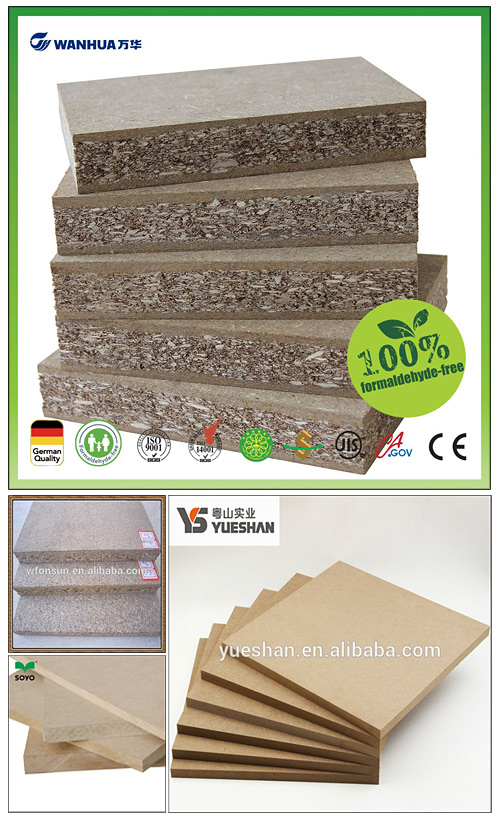

The technology for creating hemp fiber boards has existed for many decades, however such boards are not yet easily available to be purchased in North America.
David Serber developed the application of medium density fiberboard from hemp plants through his research at Washington State University in 1992. Serber says: “I first came here in 1994, I believe, and I brought this board which is the first modern hemp board that was made out of MDF, that was made at Washington State University labs in 1992. ..” Serber then continues to explain that the Canadian government sent him hemp to work with at Washington State to develop such a board, and when the Canadian government saw his results it led to them legalizing hemp for cultivation in that country.
In this 2013 video, wood scientist Solace Sam-Brew explains how she is doing research at the University of British Columbia to develop flax and hemp particle boards. She explains that hemp and flax have a “waxy outer layer” that makes it difficult to use traditional glues to penetrate their surface, and instead a more expensive resin must be used to bind the material together. She says European manufacturers are creating such boards to be used for building furniture, however currently no mills in Canada are doing so.
This video explains that a company “Tennessee Wood Flooring” has announced that they are the first to produce hardwood flooring made from hemp fibers.
Strong and lightweight particle boards can be made from 100% hemp fibers, replacing the use of wood altogether.
Many Chinese and European companies are manufacturing and selling hemp particle board, as shown in the following composite image:


A low density hemp fiberboard. Image: Wikipedia.
The technology for creating hemp fiber boards has existed for many decades, however such boards are not yet easily available to be purchased in North America.
David Serber developed the application of medium density fiberboard from hemp plants through his research at Washington State University in 1992. Serber says: “I first came here in 1994, I believe, and I brought this board which is the first modern hemp board that was made out of MDF, that was made at Washington State University labs in 1992. ..” Serber then continues to explain that the Canadian government sent him hemp to work with at Washington State to develop such a board, and when the Canadian government saw his results it led to them legalizing hemp for cultivation in that country.
In this 2013 video, wood scientist Solace Sam-Brew explains how she is doing research at the University of British Columbia to develop flax and hemp particle boards. She explains that hemp and flax have a “waxy outer layer” that makes it difficult to use traditional glues to penetrate their surface, and instead a more expensive resin must be used to bind the material together. She says European manufacturers are creating such boards to be used for building furniture, however currently no mills in Canada are doing so.
This video explains that a company “Tennessee Wood Flooring” has announced that they are the first to produce hardwood flooring made from hemp fibers.
Hempcrete
This video explains the benefits of constructing houses using durable “Hempcrete” as the primary material for the walls, which reduces the dependency on wood and other materials and it offers superior insulating properties.

This video explains the benefits of constructing houses using durable “Hempcrete” as the primary material for the walls, which reduces the dependency on wood and other materials and it offers superior insulating properties.

Prefabricated Hempcrete blocks being used in France. Image: Wikipedia.
Hemp Composites / Plastics
It is possible for strong composite plastics to be manufactured from hemp as opposed to plastics being made from petroleum.
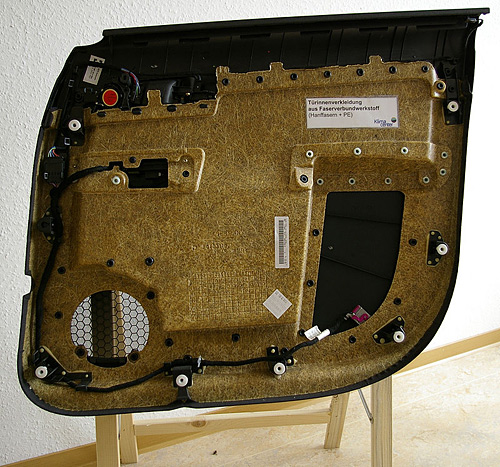
This car door has been manufactured using a composite that incorporates hemp fibers, which is a very effective use of the crop, unlike simply making straight plastic from the plant which can be done with any sort of vegetative matter. Image: Wikipedia.
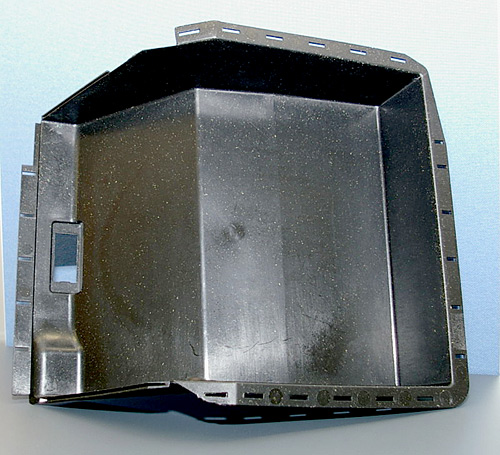
Hemp plastic automobile glove box. Image: Wikipedia.
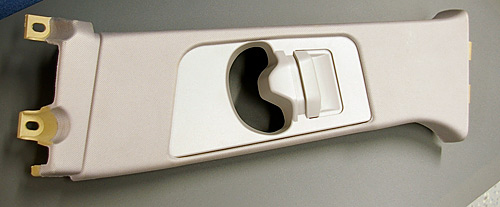
Hemp plastic automobile column. Image: Wikipedia.
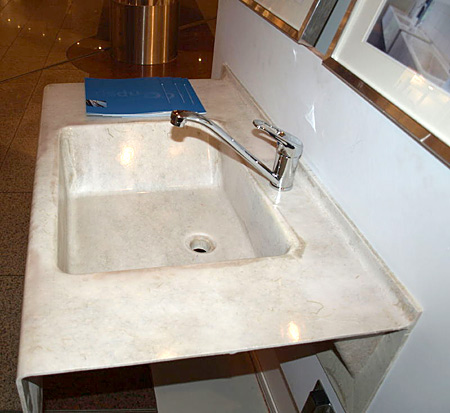
Hemp composite sink basin. Image: Wikipedia.
It is possible for strong composite plastics to be manufactured from hemp as opposed to plastics being made from petroleum.

This car door has been manufactured using a composite that incorporates hemp fibers, which is a very effective use of the crop, unlike simply making straight plastic from the plant which can be done with any sort of vegetative matter. Image: Wikipedia.

Hemp plastic automobile glove box. Image: Wikipedia.

Hemp plastic automobile column. Image: Wikipedia.

Hemp composite sink basin. Image: Wikipedia.
Hemp Personal Care Products
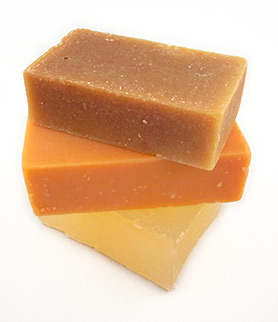

Quality natural soaps and shampoos can be made from hemp. Image: BigStockPhoto.com.
Hemp Paint / Varnish
From Wikipedia: “Hemp oil is a ‘drying oil’, as it can polymerize into a solid form. Due to its polymer-forming properties, hemp oil is used on its own or blended with other oils, resins, and solvents as an impregnator and varnish in wood finishing, as a pigment binder in oil paints, and as a plasticizer and hardener in putty. It has uses similar to linseed oil and characteristics similar to tung oil.”

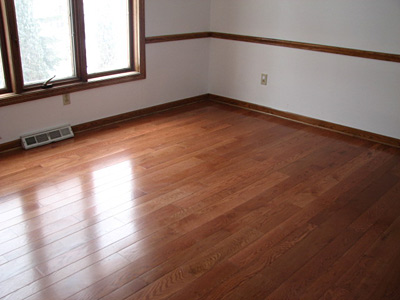
From Wikipedia: “Hemp oil is a ‘drying oil’, as it can polymerize into a solid form. Due to its polymer-forming properties, hemp oil is used on its own or blended with other oils, resins, and solvents as an impregnator and varnish in wood finishing, as a pigment binder in oil paints, and as a plasticizer and hardener in putty. It has uses similar to linseed oil and characteristics similar to tung oil.”

Image: Wikipedia.

Image: Wikipedia.
Hemp Thermal Insulation
Hemp insulation is very effective and efficient, being made from the inner section of the hemp stalk.

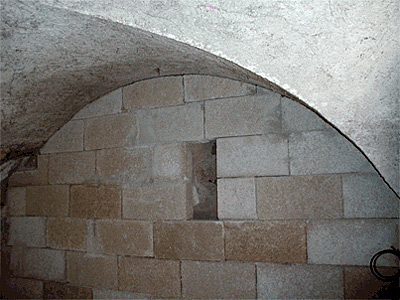
Hemp insulation is very effective and efficient, being made from the inner section of the hemp stalk.

Hemp as thermal insulation. Image: Wikipedia.

Hemp interior thermal insulation blocks. Image: Wikipedia.
Hemp Rope
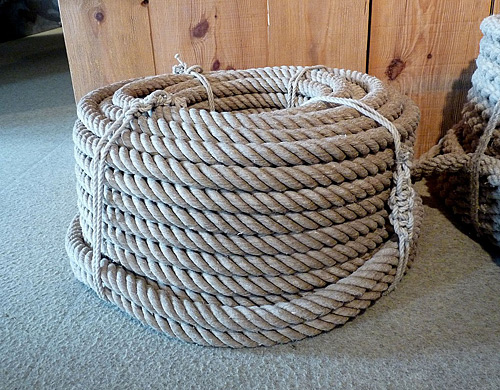
It is well-known that ropes can be made from hemp, although hemp is not the most ideal material to be used for that purpose.
From Wikipedia: “Hemp rope was used in the age of sailing ships, though the rope had to be protected by tarring, since hemp rope has a propensity for breaking from rot, as the capillary effect of the rope-woven fibers tended to hold liquid at the interior, while seeming dry from the outside. Tarring was a labor-intensive process, and earned sailors the nickname ‘Jack Tar’.”
This mountaineering article explains that climbing fatalities have significantly decreased since hemp ropes have been phased out in favor of nylon ropes that do not rot on the inside when they are exposed to moisture.

Hemp rope. Image: Wikipedia.
It is well-known that ropes can be made from hemp, although hemp is not the most ideal material to be used for that purpose.
From Wikipedia: “Hemp rope was used in the age of sailing ships, though the rope had to be protected by tarring, since hemp rope has a propensity for breaking from rot, as the capillary effect of the rope-woven fibers tended to hold liquid at the interior, while seeming dry from the outside. Tarring was a labor-intensive process, and earned sailors the nickname ‘Jack Tar’.”
This mountaineering article explains that climbing fatalities have significantly decreased since hemp ropes have been phased out in favor of nylon ropes that do not rot on the inside when they are exposed to moisture.
Products that could be made from hemp, but aren’t the most optimum use of the plant
The cultivation of hemp is only now starting to become more adopted in Western countries, so it would be a waste of the plant’s most beneficial characteristics to simply turn it into BIOFUEL or SIMPLE PLASTICS, which can be done with any vegetative matter. But even if the crop was widely grown, it still would not be the most suitable crop to use for those purposes. Additionally, vegetative matter may not necessary even be the best material to use for such purposes in the first place.

Why waste precious hemp fibers turning it into biofuel and simple plastics, which can be done with any vegetative matter? Kudzu vines grow at a rate of one foot a day, so if any plant should be used for those purposes it is that one.
If biomass is to be used for making fuel and plastics, then it would make sense to use the fastest growing vegetation as possible, which is not hemp. That honor goes to “kudzu”, AKA “The vine that ate the South.” Kudzu can grow 60 feet in a season, which is almost one foot a day! (Also see this article that explains issues with the plant.)
However, even though hemp may not be the most appropriate plant to be used to make straight plastics, sometimes plastic composites make use of incorporating hemp fibers or even hemp canvases to give it extra reinforcement and strength, so of course that is a different story althogether.
As far as biofuels and straight plastic production go, there is much debate about if cropland should even be used for that purpose in the first place. In a world where people are starving and deforestation is happening, is it justifiable to be growing crops that will only end up in people’s gas tanks? The world has a lot of oil, and its extraction is usually relatively clean (with some bad notable exceptions such as fracking). In any event, if people want to reduce the use of petroleum they could be using solar power and electric vehicles rather than wasting precious farmland that could be used for better purposes.
View a working demonstration of a solar power generating "Sterling Engine" type dish, a method for converting sunlight into energy which holds the world's record for efficiency. Sterling Engines work by using focused sunlight to heat an element of the engine, which expands and compresses its internal gasses which in turn drives a piston that can generate electricity.
Also see this article containing more information about Sterling engine solar collectors.
About the theory of “Abiogenic Oil”
Also it is shown that at least some of the oil under the ground, if not a lot of it, is “Abiogenic” in origin, meaning that it seeps up from deep in the Earth’s crust instead of originating from decaying plant matter. For example, many oil wells have been shown to be filling themselves up again after being considered to be depleted with no source of more oil. Some people attempt to write off the concept of Abiogenic oil as an “unfounded conspiracy theory,” but credible studies show that it is true. Even though the theory is accepted by many scientists (see here, and here), the global political Establishment does not want people to know about it because it additionally nullifies their “Peak Oil” hypothesis that claims the world is going to run out of oil soon. The Establishment’s agendas of concealment may likely be seen on the Wikipedia page about Abiogenic oil, where people have logged in and made entries claiming that the theory doesn’t have validity. (But if you read through the article you will find that it also contains much information about credible studies which show that it does exist.)
The cultivation of hemp is only now starting to become more adopted in Western countries, so it would be a waste of the plant’s most beneficial characteristics to simply turn it into BIOFUEL or SIMPLE PLASTICS, which can be done with any vegetative matter. But even if the crop was widely grown, it still would not be the most suitable crop to use for those purposes. Additionally, vegetative matter may not necessary even be the best material to use for such purposes in the first place.

Why waste precious hemp fibers turning it into biofuel and simple plastics, which can be done with any vegetative matter? Kudzu vines grow at a rate of one foot a day, so if any plant should be used for those purposes it is that one.
If biomass is to be used for making fuel and plastics, then it would make sense to use the fastest growing vegetation as possible, which is not hemp. That honor goes to “kudzu”, AKA “The vine that ate the South.” Kudzu can grow 60 feet in a season, which is almost one foot a day! (Also see this article that explains issues with the plant.)
However, even though hemp may not be the most appropriate plant to be used to make straight plastics, sometimes plastic composites make use of incorporating hemp fibers or even hemp canvases to give it extra reinforcement and strength, so of course that is a different story althogether.
As far as biofuels and straight plastic production go, there is much debate about if cropland should even be used for that purpose in the first place. In a world where people are starving and deforestation is happening, is it justifiable to be growing crops that will only end up in people’s gas tanks? The world has a lot of oil, and its extraction is usually relatively clean (with some bad notable exceptions such as fracking). In any event, if people want to reduce the use of petroleum they could be using solar power and electric vehicles rather than wasting precious farmland that could be used for better purposes.
View a working demonstration of a solar power generating "Sterling Engine" type dish, a method for converting sunlight into energy which holds the world's record for efficiency. Sterling Engines work by using focused sunlight to heat an element of the engine, which expands and compresses its internal gasses which in turn drives a piston that can generate electricity.
Also see this article containing more information about Sterling engine solar collectors.
About the theory of “Abiogenic Oil”
Also it is shown that at least some of the oil under the ground, if not a lot of it, is “Abiogenic” in origin, meaning that it seeps up from deep in the Earth’s crust instead of originating from decaying plant matter. For example, many oil wells have been shown to be filling themselves up again after being considered to be depleted with no source of more oil. Some people attempt to write off the concept of Abiogenic oil as an “unfounded conspiracy theory,” but credible studies show that it is true. Even though the theory is accepted by many scientists (see here, and here), the global political Establishment does not want people to know about it because it additionally nullifies their “Peak Oil” hypothesis that claims the world is going to run out of oil soon. The Establishment’s agendas of concealment may likely be seen on the Wikipedia page about Abiogenic oil, where people have logged in and made entries claiming that the theory doesn’t have validity. (But if you read through the article you will find that it also contains much information about credible studies which show that it does exist.)
EXAMPLES OF FOODS THAT CAN BE MADE FROM HEMP
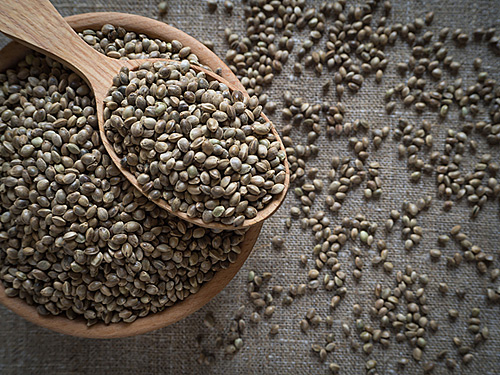
Until recently, only sterilized hemp seeds have been legal to sell in the United States. Now that hemp cultivation has been legalized, seeds can be available that are as fresh and raw as possible. Image: BigStockPhoto.com.
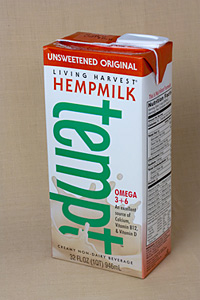
Hemp milk that is made from hemp seeds is a great alternative to dairy milk. It is also less expensive than other non-dairy milks such as almond milk (and now that growing hemp is legal in the U.S. it is sure to become even more economical.) Image: Wikipedia.
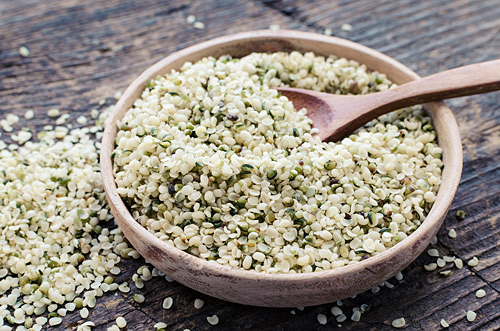
“Hemp Hearts” are hemp seeds that have their outer shell removed. They are very nutritious and have a nutty taste, and they can be consumed raw, cooked, or roasted. They can be added to salads and are often used in recipes, for example homemade granola bars can be made using them, veggie burger recipes often include them, and “peanut butter”-type hemp butters can be made from them. Image: BigStockPhoto.com.
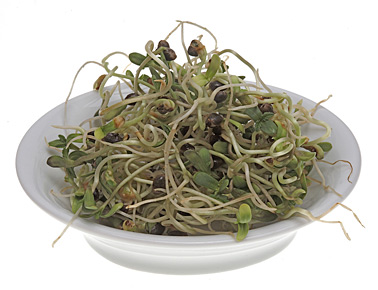
Hemp sprouts can be made in the same manner as any other type of sprouted seeds. And of course they can only be made from hemp seeds that haven’t been sterilized, so such sprouts have been out of reach of most Americans until now. Image: BigStockPhoto.com.
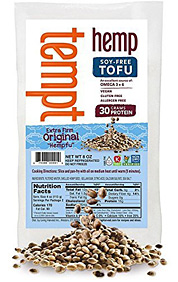
Hemp tofu is made from hemp seeds rather than from soybeans. It is more crumbly than traditional tofu, so it works best in recipes that make use of that characteristic, such as tofu scrambles.

Hempseed oil is obtained by cold pressing hemp seeds. It has a nutty flavor, and it is not suitable for frying because it has a low smoke point. Image: BigStockPhoto.com.
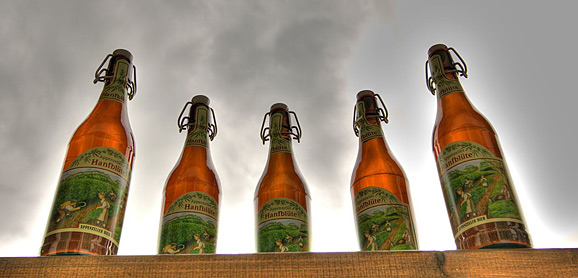
Hemp beer (Hanfbier) is beer that is infused with parts of the hemp plant such as the buds, leaves, and seeds, and it does not contain THC. It is not brewed from hemp directly, but rather the plant is additionally added to the beer. An example is the Swiss beer Hanfblüte. Image: Wikipedia.
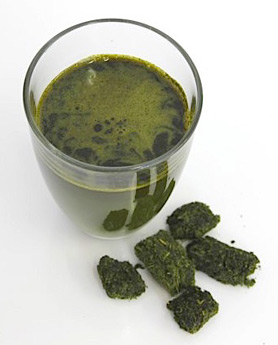
Hemp juice is loaded with healthy vitamins and nutrients. It is cold-pressed from the upper parts of the hemp plant including the leaves, therefore it makes good use of a valuable part of the plant that is often otherwise left on the fields to decompose. Image: Wikipedia.

Until recently, only sterilized hemp seeds have been legal to sell in the United States. Now that hemp cultivation has been legalized, seeds can be available that are as fresh and raw as possible. Image: BigStockPhoto.com.

Hemp milk that is made from hemp seeds is a great alternative to dairy milk. It is also less expensive than other non-dairy milks such as almond milk (and now that growing hemp is legal in the U.S. it is sure to become even more economical.) Image: Wikipedia.

“Hemp Hearts” are hemp seeds that have their outer shell removed. They are very nutritious and have a nutty taste, and they can be consumed raw, cooked, or roasted. They can be added to salads and are often used in recipes, for example homemade granola bars can be made using them, veggie burger recipes often include them, and “peanut butter”-type hemp butters can be made from them. Image: BigStockPhoto.com.

Hemp sprouts can be made in the same manner as any other type of sprouted seeds. And of course they can only be made from hemp seeds that haven’t been sterilized, so such sprouts have been out of reach of most Americans until now. Image: BigStockPhoto.com.

Hemp tofu is made from hemp seeds rather than from soybeans. It is more crumbly than traditional tofu, so it works best in recipes that make use of that characteristic, such as tofu scrambles.

Hempseed oil is obtained by cold pressing hemp seeds. It has a nutty flavor, and it is not suitable for frying because it has a low smoke point. Image: BigStockPhoto.com.

Hemp beer (Hanfbier) is beer that is infused with parts of the hemp plant such as the buds, leaves, and seeds, and it does not contain THC. It is not brewed from hemp directly, but rather the plant is additionally added to the beer. An example is the Swiss beer Hanfblüte. Image: Wikipedia.

Hemp juice is loaded with healthy vitamins and nutrients. It is cold-pressed from the upper parts of the hemp plant including the leaves, therefore it makes good use of a valuable part of the plant that is often otherwise left on the fields to decompose. Image: Wikipedia.
ISSUES WITH CULTIVATING HEMP
A news report about hemp cultivation in Alberta, Canada
This CBC news report explains that many Canadian farmers have been recently switching to growing hemp. [Note: May 30, 2021— The CBC news broadcast that was previously shown here is no longer online, and I don’t have a copy of it. I have put this broadcast in its place, but it does not explain certain issues that were in the previous broadcast. The following description is for the information that was in the previous video.]
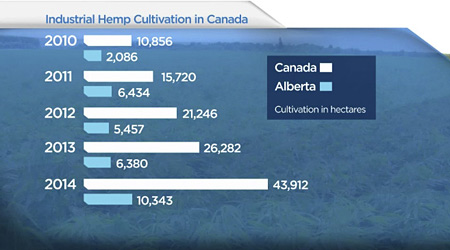
A graphic from the video explains the rates of the adoption of cultivating hemp in Canada.
Following are points from the video:
— Many Canadian farmers are switching to growing industrial hemp in increasing numbers. Hemp cultivation in Canada has quadrupled in quantity in the past five years, with a lot of it happening in Alberta.
— Many farmers are switching to growing hemp because it is the most profitable crop for them to grow.
— Hemp needs ample fertilizer to grow [Note: but it does not need pesticides as many other crops require], as well as great soil conditions. And also it is a sensitive crop, for example if a big rainstorm happens soon after seeding it may kill most of the plants due to them not tolerating standing water.
— Demands for hemp are increasingly growing.
This CBC news report explains that many Canadian farmers have been recently switching to growing hemp. [Note: May 30, 2021— The CBC news broadcast that was previously shown here is no longer online, and I don’t have a copy of it. I have put this broadcast in its place, but it does not explain certain issues that were in the previous broadcast. The following description is for the information that was in the previous video.]

A graphic from the video explains the rates of the adoption of cultivating hemp in Canada.
Following are points from the video:
— Many Canadian farmers are switching to growing industrial hemp in increasing numbers. Hemp cultivation in Canada has quadrupled in quantity in the past five years, with a lot of it happening in Alberta.
— Many farmers are switching to growing hemp because it is the most profitable crop for them to grow.
— Hemp needs ample fertilizer to grow [Note: but it does not need pesticides as many other crops require], as well as great soil conditions. And also it is a sensitive crop, for example if a big rainstorm happens soon after seeding it may kill most of the plants due to them not tolerating standing water.
— Demands for hemp are increasingly growing.




















